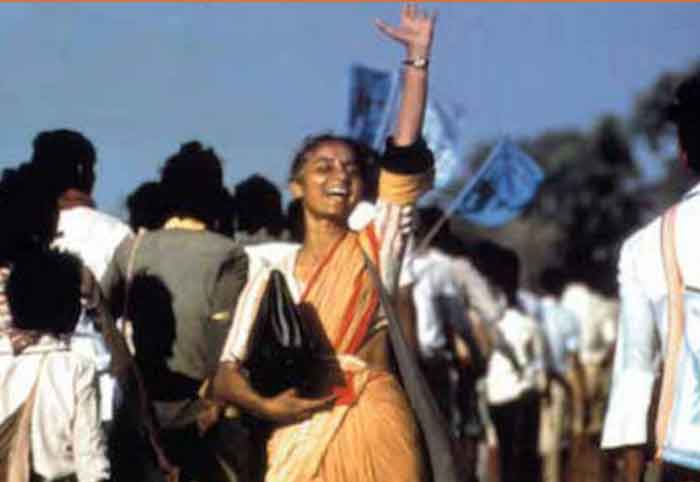
At a time when there is perhaps more need than ever before in human history for re-establishing and reasserting the protective relationship between nature and people , the Narmada Bachao Aandolan (NBA—Save the Narmada River and Its People Movement) in Central-Western India sought to accomplish this in very meaningful ways with continuity extending over several decades. The peaceful movement was successful in responding well to huge challenges of mass disruption, and even though some of its key demands were not accepted by the authorities, its legacy is one of trying best for noble goals in difficult conditions.
When the movement emerged around four decades back, the situation faced in the Narmada river systems was a truly formidable one, that of the authorities seeking to change the Narmada river, its tributaries and surrounding region so drastically in about five decades that changes of such scale may not have taken place in the previous five thousand years or even fifty thousand years.
This would involve creating some of the most dense concentrations of dams ( 30 major, 135 medium and 3000 small dams were planned) ever seen, resulting in displacement of several hundred thousand people directly and indirectly from their settled livelihoods, homes and villages, and inflicting immense changes on environment, bio-diversity, geology and seismicity of the region without so much as trying to even understand the impact in totality of the enormous developments that were to be taken up on the river systems.
The best that the authorities tried to achieve were rather sketchy, biased studies of each one of the individual projects considered separately. The only time a genuinely independent review of even a single project was taken up ( the Morse committee report on Sardar Sarovar Project) , it went clearly against the overall desirability of the project. Its findings were promptly ignored by the authorities.
Despite the persistence of the authorities in going against these projects in the wake of increasing evidence of the destructive and disruptive nature of the entire developments, the NBA showed amazing resilience and strength in pursuing its concerns and protests for decades. Its vision combined the concerns of protecting the river as well as people. The struggles of people who faced displacement, first to avoid displacement and then to get better rehabilitation, went on from year to year, from protest to protest, resulting in several gains from time to time. The weaknesses of the rehabilitation effort were pointed out time and again, false claims of the authorities were exposed, new demands were carefully formulated so that the mistakes made by the authorities could be corrected. Experts were contacted to study the various important aspects of the emerging situation and give their comments. Timely warnings based on these were given. The Morse committee got constituted only because of such relentless efforts of NBA.
Groups of young activists grew up with the movement. Some had more concerns with protecting the threatened people, some with protecting the beautiful free-flowing rivers contributing so much to the welfare and nurturing of villagers and various forms of life. The movement combined these various streams of thought, presenting an integrated view of environment and justice concerns, taking these forward in peaceful ways.
In conditions of better democracy and more wisdom, the voice of the NBA could have been heeded to prevent much destruction and disruption and to save scarce resources for much better use. The tendency of the authorities instead was to try to marginalize the movement in as many ways as possible. As the politicians who were more biased against the NBA became more powerful at national level, the leading activists of NBA faced increasing harassment and victimization.
Ultimately, the gradual marginalization of the NBA is more a sign of weakening democracy and lesser space for democratic, peaceful protests. Movements which challenge the prevailing paradigm of development face the most difficulties, despite their very high relevance. Clearly there is urgent need for strengthening such movements and for increasing their broader unity.
Bharat Dogra is a journalist and author. His recent books include Protecting Earth for Children and Man Over Machine ( Gandhian Ideas for Our Times).
GET COUNTERCURRENTS DAILY NEWSLETTER STRAIGHT TO YOUR INBOX












































